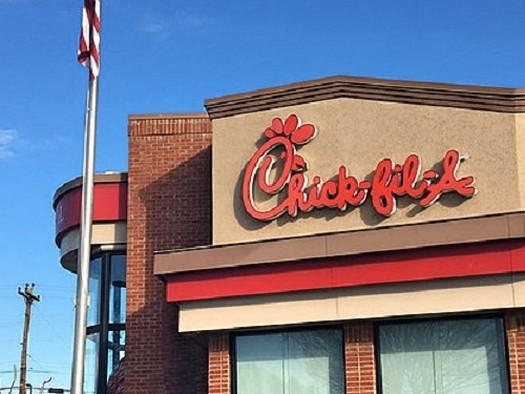- Five Forces Analysis ›
- Companies ›
- Chick-fil-A Porter Five Forces Analysis
Chick-fil-A Porter Five Forces Analysis
Five Forces analysis of Chick-fil-A covering threat of new entrants & substitutes, bargaining power of buyers & suppliers and competitive rivalry.
Threat of New Entrants:
Chick-fil-A is a leading fast-food chain having a strong presence across several geographies. There are a few of alternatives for its goods. Customers with clout can exert pressure on businesses to lower rates or enhance quality for the same price, reducing profits. In the fast-food industry, McDonald's has no problems with provider power. If the buyer does not account for a significant portion of the supplier's sales, the provider has a strong bargaining position. The idea is that the supplier's negotiating power in a market influences the competitive environment for the buyer and the buyer's capacity to achieve profitability. Customers have power when there aren't many of them, but there are a lot of sellers, and switching from one business's products or services to another isn't difficult. Low Buyer Power Customers have minimal influence over console designers, but given the large number of potential customers, the company isn't concerned about losing customers.

Image: Wikimedia
This concludes the threat of new entrants in the Chick-fil-A Porter Five Forces Analysis.
Threat of Substitutes:
Below are the threats of substitute products of Porter’s Five Forces analysis of Chick-fil-A:
There has been a significant danger of replacements for a fast-food chain brand like Chick-fil-A. The substitute of the offerings can be home cooked food as well as natural fruits and vegetables, which are cheaper, healthier and more easily available.
There has also been a report that some of the company's goods are unsafe to use, which has resulted in a drop in sales. To compete with the alternatives, Chick-fil-A began emphasizing the health benefits of its products.
Read more about Chick-fil-A
Bargaining Power of Customers:
In the Chick-fil-A Porter Five Forces Analysis the bargaining power of the customers can be explained as:
Due to the high level of competition, buyers have a lot of negotiating power. Consumers' switching costs are minimal since several firms sell a range of identical items. This appears to be a great risk for any business. As a result, Chick-fil-A ensures that its customers are satisfied. This has made Chick-fil-A one of the most dependable companies in the perspective of its customers. In this industry the buyers have full information about the product over online channels and can easily compare to come up with most suitable product for them which would further increase the bargaining power of customers.
The threat of backward integration is high so the customers would have larger bargaining power.
Bargaining Power of Suppliers:
Following is the bargaining power of suppliers in the Porter’s Five Forces analysis of Chick-fil-A:
Chick-fil-A has the largest proportion of the food and beverage sector, necessitating a larger number of supply chains. Chick-fil-A has responded by expressing worry for its suppliers, as it values long-term relationships. The supplier’s industry is not dominated by a few companies and is not concentrated than the industry it sells to, so they have low bargaining power of suppliers. The threat of forward integration is low hence the bargaining power of suppliers is reduced further. The supplier’s product are not that differentiated from their competitors or not customized in this industry so they could not build a switching cost for the buyer as a result of which the bargaining power of the suppliers increases.
Competitive Rivalry:
The impact of key competitors in the Chick-fil-A Porter Five Forces Analysis is as follows:
Chick-fil-A is one of the most successful companies in this competitive field, which includes Unilever, Kraft Foods, and Group DANONE. Chick-fil-A has been a consistent performer in this event for the past 150 years. Other businesses have a lot of competition with Chick-fil-A. This is a high growth industry hence the competition is high and so is competitive rivalry. The initial cost required to build something similar in that scale is difficult due to fixed cost and supply chain constraints which requires years to make. This would further decrease the competitive rivalry in the industry.
The supplier’s product are not that differentiated from their competitors or not customized in this industry so they could not build a switching cost so more firms wont be willing to come into the market.
To conclude, the above Chick-fil-A Porter Five Forces Analysis highlights the various elements which impact its competitive environment. This understanding helps to evaluate the various external business factors for any company.
This article has been researched & authored by the Content & Research Team which comprises of MBA students, management professionals, and industry experts. It has been reviewed & published by the MBA Skool Team. The content on MBA Skool has been created for educational & academic purpose only.
Browse analysis of more brands and companies similar to Chick-fil-A Porter Five Forces Analysis. This section covers many brands and companies.
Continue Reading:
The names and other brand information used in the Five Forces Analysis section are properties of their respective companies. The companies are not associated with MBA Skool in any way.
What is MBA Skool?About Us
MBA Skool is a Knowledge Resource for Management Students, Aspirants & Professionals.
Business Courses
Quizzes & Skills
Quizzes test your expertise in business and Skill tests evaluate your management traits
Related Content
All Business Sections
Write for Us